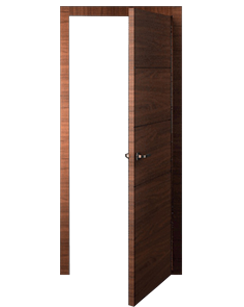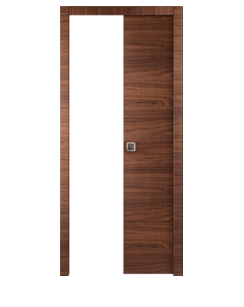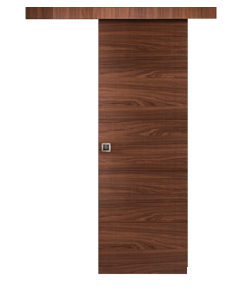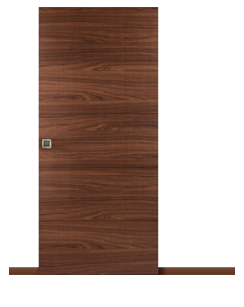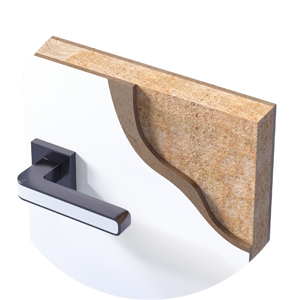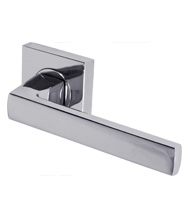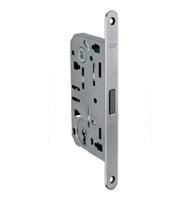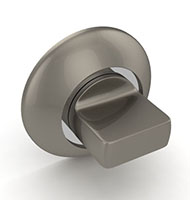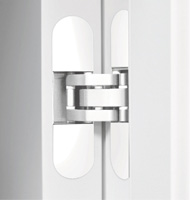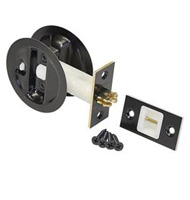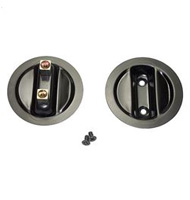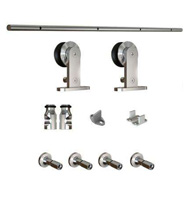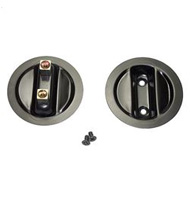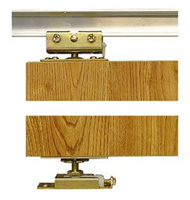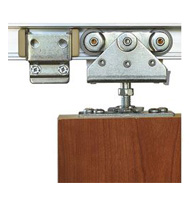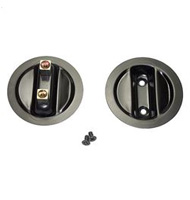Introduction
Essentially, each of us regularly has to choose something, such as what to make for breakfast, what to wear to the office, what movie to watch in the evening, or where to go on the weekend. The more information you have about a problem, the simpler it is to find a solution.
When renovating, homeowners often need help with choosing interior doors. Most likely, you have wondered about the various configurations and which one is better to install.
Below, we will explain the difference between swing and sliding doors to make buying them for your home or apartment easier and faster.
Swing Door vs. Sliding Door — What's The Difference?
Swing doors
Swing doors are a traditional solution for both living spaces and offices. They are easy to open and close in opposite directions thanks to the hinges attached to the slab, making them a convenient element of a house or apartment. Left/right-hand inswing and outswing door constructions are available for order.
This door-opening system can consist of two slabs. So, for wide openings, double swing doors will be appropriate. However, it is essential to consider that they require a lot of free space to work correctly.
Frameless doors (invisible, flush-mounted, or hidden doors) are at the top of their popularity right now. When closed, they blend in with the wall and have no protruding parts. Consequently, after installation, it will create the illusion of the absence of a doorway, so you can "hide" behind such a door, for example, a pantry.
Sliding doors
Their configuration makes sliding doors look unusual in the interior, becoming an accent element in any room. They can also have one or two slabs, but one of their primary functions is to save space.
Belldinni offers the following sliding door systems:
-
Pocket and double pocket. Pocket doors are fancy and modern-style doors that naturally save space. This configuration was created for small apartments or rooms without classic swing doors. A pocket is a rigid box mounted in the opening, with a sliding system built inside. When opened, the slab slides inside the wall, hiding there.
-
Bypass. Bypass doors are a sliding door system commonly used for closets or storage areas. The panels are designed to overlap each other when opened or closed, allowing access to one side of the closet at a time.
-
Bi-fold. These doors include two halves. When opened, each slab folds towards the other, creating the effect of a book unfolding.
-
Magic. This configuration with a concealed track is innovative because the door moves along the wall, but the entire mechanism is hidden behind the slab.
-
Barn. Barn doors give a home more aesthetic value and create more space in an apartment. The slab, mounted on the top rail, is attached to the wall with two or four rollers. Closers are responsible for smooth and quiet movement.
Swing Doors: Pros And Cons
Advantages of Swing Doors
-
Perfect heat and sound insulation if the slabs are made of quality materials and have a quality door filler.
-
They are suitable for wide doorways.
-
Swing doors are available in various colors and stylish accents, such as milling, aluminum strips (shiny or black), glass inserts (frosted or clear), and mirrors.
-
Easy installation.
-
Optimal price.
Disadvantages of Swing Doors
-
They need a lot of free space to operate correctly.
-
We recommend installing special stops to prevent the doors from hitting the walls or furniture when opened and damaging them by leaving scratches.
Sliding Doors: Pros And Cons
Advantages of Sliding Doors
-
Undoubtedly, space-saving comes first. Since they have no opening radius, homeowners especially prefer to install them in small apartments or rooms.
-
Sliding doors are pretty ergonomic. They require little effort to open and close, making them ideal for families with children or older people.
-
Their neat appearance helps them become a stylish element of your interior.
-
The safety lies in the fact that, for example, in pocket doors, the slab can be left ajar at any level without fear of the door slamming shut.
-
Most configurations provide silent opening and closing.
-
Variability of materials and design: we offer models of interior doors decorated with aluminum strips or glass inserts.
-
They are suitable for apartments and offices arranged in any style: minimalism, classic, modern, Scandinavian, country, hi-tech, etc.
Disadvantages of Sliding Doors
-
Compared to swing doors, the sliding door slabs do not fit as tightly into the doorway, and therefore, sound insulation is lower.
-
For a similar reason to the previous point, the level of thermal insulation is reduced.
-
As a rule, they cost more.
-
If the sliding door is not cleaned frequently, the dust may clog the lower rail and cause problems during opening.
Sliding Door vs. Swing Door: The Verdict
As you can see, each configuration has its advantages. The choice of door depends on your preferences, the amount of available space in the house or apartment, budget, and the necessary functions, for example, only delimitation of rooms, aesthetic appearance, noise, and sound insulation.

